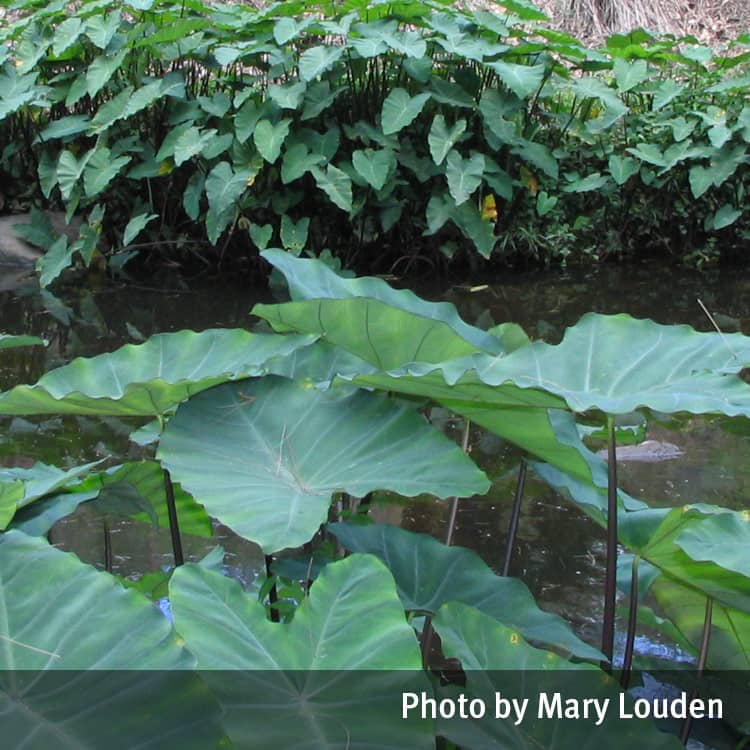Warning
Seek urgent medical attention if lips or tongue become swollen or if there is difficulty breathing or swallowing.
Description
Large ornamentals grown for their huge heart-shaped leaves. The roots, when cooked, are an important food source in the Pacific region. Except for the leaves, the plants are similar in appearance to cunjevoi (Alocasia brisbanensis and Alocasia macrorrhizos).
The flowers are a yellow coloured spathe or sheath about 15-21cm long, which is pointed at the tip and open along one side. The central column is crowded with small yellow florets.
The leaves are large, heart-shaped with leaf stalks attached to the underside of the leaf, and not in the notch of the lobed base.
Toxicity
Symptoms
If any part of this plant is chewed or eaten raw, it can cause immediate burning pain and swelling of the lips, mouth and tongue. Swelling may cause copious salivation and difficulty in breathing, swallowing or speaking. Intense gastric irritation may occur if swallowed.
Images

Details
Common name: Taro
Botanical name: Colocasia species, (most common species Colcasia esculenta)
Other common names: Dasheen, elephant ears
Family: Araceae
General description: Large ornamentals grown for their huge heart-shaped leaves. The roots, when cooked, are an important food source in the Pacific region. Except for the leaves, the plants are similar in appearance to cunjevoi (Alocasia brisbanensis and Alocasia macrorrhizos).
Flowers: The flowers are a yellow coloured spathe or sheath about 15-21cm long, which is pointed at the tip and open along one side. The central column is crowded with small yellow florets.
Leaves: The leaves are large, heart-shaped with leaf stalks attached to the underside of the leaf, and not in the notch of the lobed base.
Fruit/Berries: The fruit are green berries 3-5mm long, ellipsoid shaped and clustered along the spike.
Other: The sap is clear.